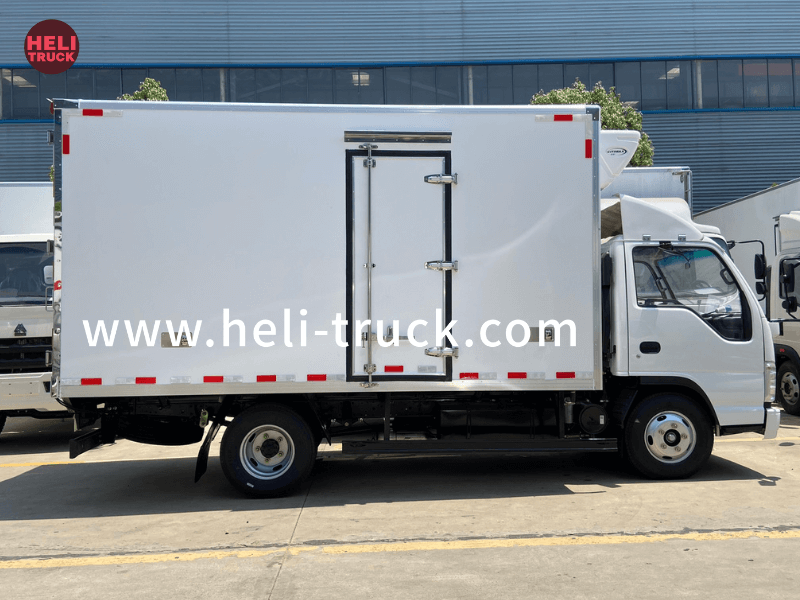Evolution of Garbage Compactor Truck Types A Comprehensive Guide

Introduction:
Garbage compactor trucks play a crucial role in waste management systems around the world. These specialized vehicles are designed to collect and compact solid waste efficiently, reducing the volume of garbage and making it easier to transport and dispose of. Over the years, various types of garbage compactor trucks have been developed to meet the diverse needs of different communities and waste management operations. In this article, we will explore the evolution of garbage compactor truck types, from early designs to modern innovations, highlighting their key features, advantages, and applications.
1. Special vehicle industry trends :
The concept of garbage compaction dates back to the early 20th century when cities began facing increasing challenges in managing solid waste. The first garbage compactor trucks were simple in design, consisting of a basic collection bin mounted on a truck chassis. These early models relied on manual labor to load garbage into the bin, which was then compacted using hydraulic or mechanical mechanisms.
2. Rear Loader Compactor Trucks:
One of the most common types of garbage compactor trucks is the rear loader, which features a compaction mechanism located at the rear of the vehicle. Rear loader compactor trucks are equipped with a hydraulically operated compactor blade that pushes garbage into the storage container, compacting it to reduce volume. These trucks are ideal for collecting waste from residential areas and commercial establishments with limited space for maneuvering.
3. Front Loader Compactor Trucks:

Front loader compactor trucks are designed for collecting large volumes of waste from commercial and industrial sites. These trucks feature a front-loading mechanism that allows them to pick up dumpsters and other large containers quickly and efficiently. Front loader compactor trucks are commonly used for servicing commercial establishments, industrial facilities, and large apartment complexes.
4. Side Loader Compactor Trucks:
Side loader compactor trucks are equipped with a loading mechanism on the side of the vehicle, allowing them to collect waste from curbside bins and containers. These trucks are popular in urban areas with narrow streets and limited access to collection points. Side loader compactor trucks are efficient for servicing residential neighborhoods, shopping districts, and other areas with high population density.
5. Automated Compactor Trucks:
In recent years, automated compactor trucks have gained popularity for their efficiency and productivity in waste collection operations. These advanced vehicles are equipped with robotic arms and sensors that enable them to pick up and empty bins automatically, reducing the need for manual labor. Automated compactor trucks are equipped with sophisticated compaction systems that can handle various types of waste materials, including recyclables and organic waste.
6. Transfer Station Compactor Trucks:
Transfer station compactor trucks are designed for transporting compacted waste from collection points to disposal facilities such as landfills or recycling centers. These trucks are equipped with larger storage containers and powerful compaction systems to handle large volumes of waste efficiently. Transfer station compactor trucks play a crucial role in the waste management chain by consolidating and transporting waste from multiple collection points to central processing facilities.
7. Hybrid and Electric Garbage Compactor Trucks:
With a growing focus on sustainability and environmental conservation, manufacturers have developed hybrid and electric garbage compactor trucks that offer lower emissions and reduced fuel consumption. Hybrid compactor trucks combine traditional diesel engines with electric motors to improve fuel efficiency and reduce greenhouse gas emissions. Electric compactor trucks are powered solely by electric batteries, eliminating tailpipe emissions and noise pollution.
8. Specialized Compactor Truck Designs:
In addition to standard compactor truck types, there are specialized designs tailored to specific waste management needs. For example, underground compactor trucks are used in urban areas where space is limited, and traditional collection methods are impractical. These vehicles feature underground storage containers that are emptied using hydraulic systems. High-capacity compactor trucks are designed for handling large volumes of waste in industrial settings, construction sites, and special events.
Conclusion:
Garbage compactor trucks have evolved significantly over the years, incorporating advanced technologies and innovative features to improve waste collection and management processes. From early manual designs to automated and electric models, these vehicles play a vital role in keeping our cities clean and sustainable. By understanding the different types of garbage compactor trucks and their applications, waste management authorities can choose the most suitable vehicles for their specific needs and contribute to a more efficient and environmentally friendly waste disposal system.
